In today's fast-paced business environment, effective project management is crucial for success. Excel has long been a staple tool for managing projects, from tracking progress to allocating resources and analyzing data. However, traditional Excel methods often involve complex formulas and tedious operations that can be daunting for many users. This article will explore how Excelmatic, an AI-driven tool, can simplify and enhance project management tasks, making them more efficient and accessible.
The Importance of Project Management
Project management is essential for ensuring that projects are completed on time, within budget, and to the required quality standards. In any organization, whether it's product development, marketing campaigns, or construction projects, effective project management helps coordinate resources, control timelines, and mitigate risks. Good project management not only boosts team efficiency but also ensures that project goals are met, ultimately adding value to the business.
Traditional Excel in Project Management: Steps and Limitations
Steps in Traditional Excel
Creating a Project Plan:
- List all tasks, responsible persons, start dates, end dates, and other relevant information in an Excel table. This provides a clear framework and timeline for the project.
Tracking Project Progress:
- Regularly update the status of tasks, such as "Not Started," "In Progress," or "Completed." Use conditional formatting to visually represent progress.
Resource Allocation:
- Allocate human and material resources based on task requirements. Use PivotTables to analyze resource distribution across different dimensions.
Cost Budgeting and Control:
- Calculate project expenses and monitor budget execution. Use formulas to compute total costs, average costs, and other key metrics.
Limitations of Traditional Excel
Complex Operations:
- Traditional Excel requires users to master a wide range of formulas and functions, which can be challenging for those unfamiliar with the software.
Tedious Data Updates:
- Manually updating data and formulas is time-consuming and prone to errors, especially for large-scale projects.
Limited Analytical Capabilities:
- While Excel offers some data analysis tools, it falls short when dealing with complex data relationships and predictive analytics.
Excelmatic in Project Management: Steps to Simplify Your Workflow
1. Register and Log In
Visit the Excelmatic website and sign up for an account. The user-friendly interface makes it easy to get started without a steep learning curve.
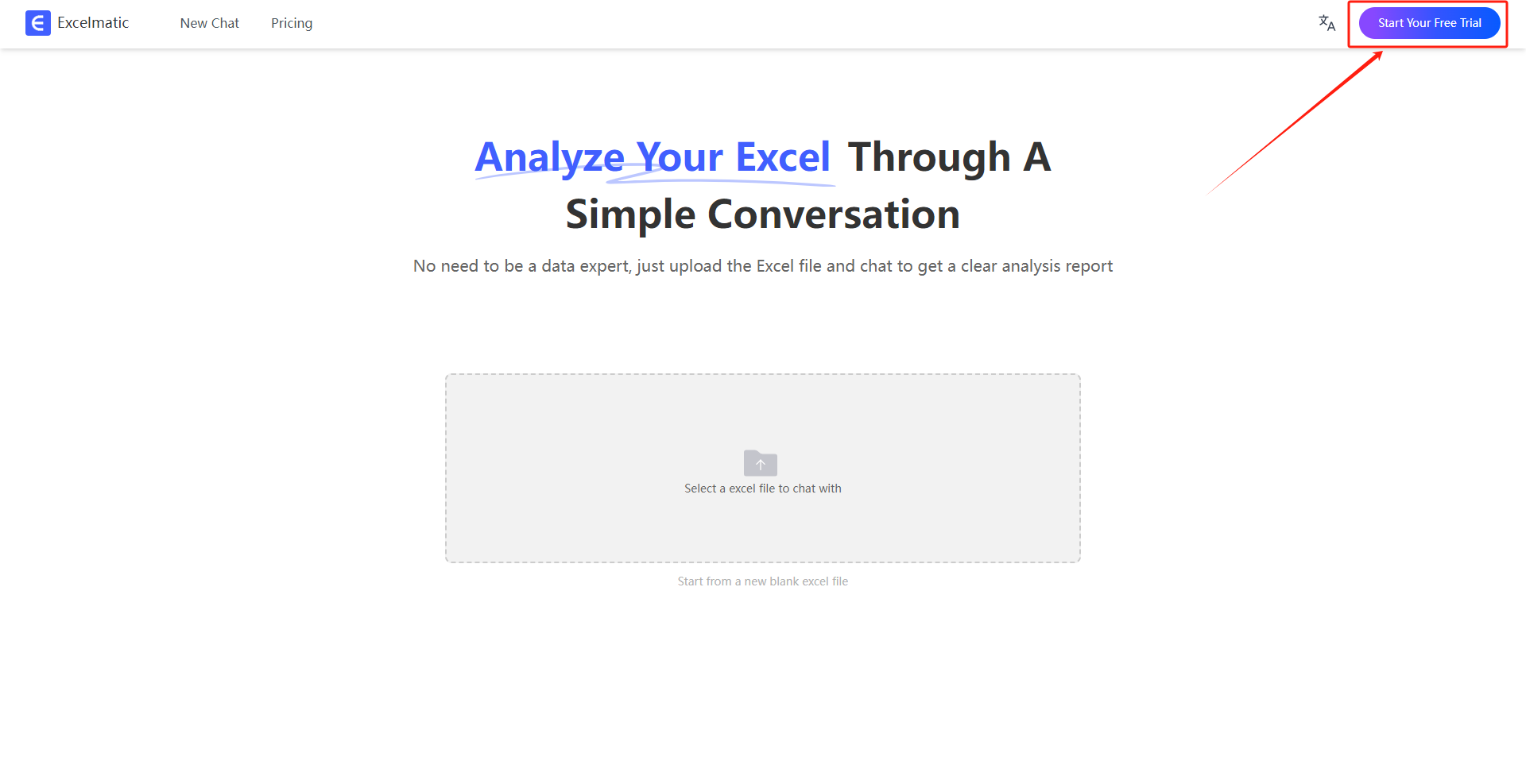
2. Upload Your Project Data
Click the upload button and select your Excel file containing project data. Excelmatic supports all common Excel formats, including .xlsx, .xls, and .csv. Once uploaded, the system automatically recognizes and loads the data.
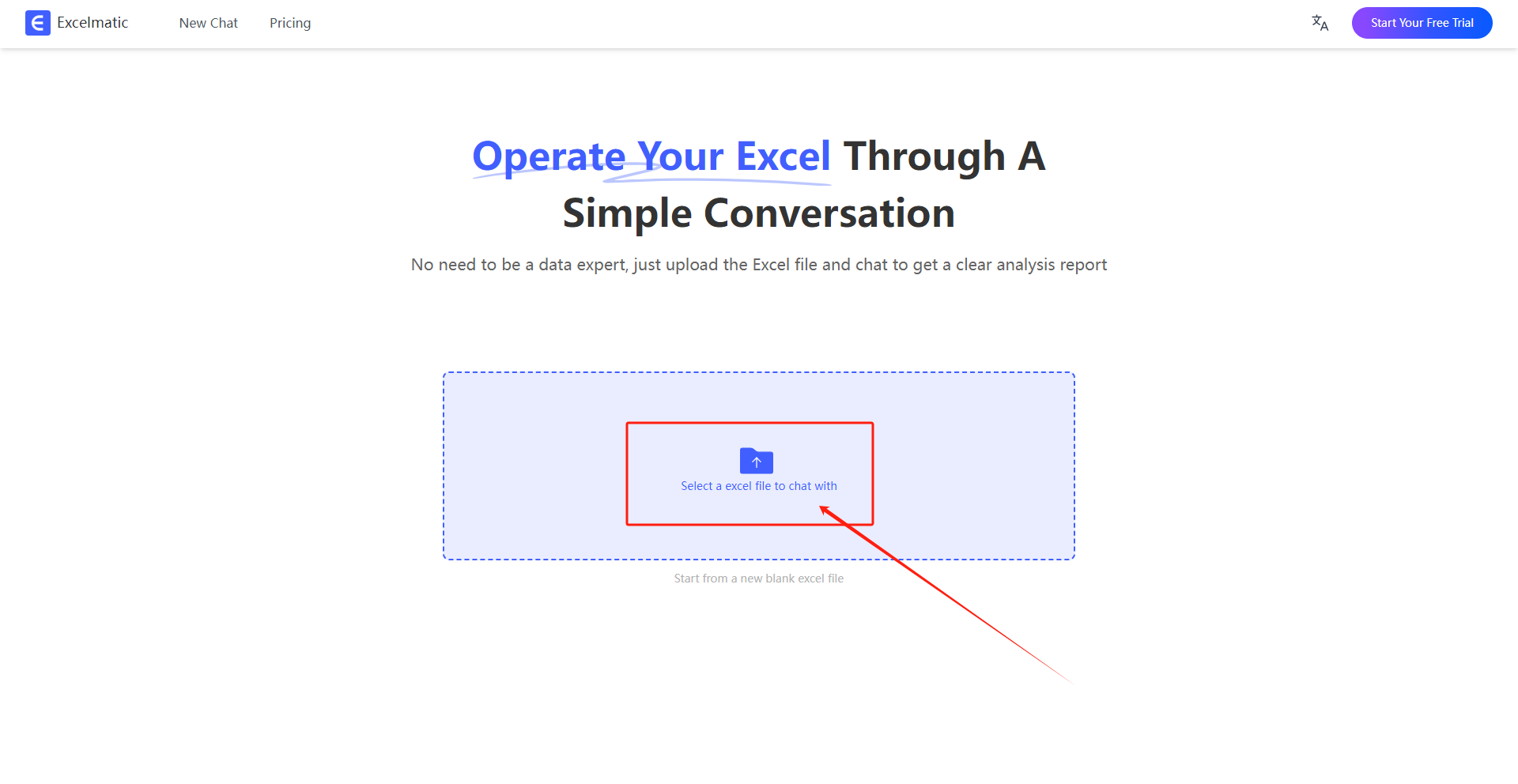
3. Start Using Natural Language Commands
With Excelmatic, you can perform various project management tasks using simple natural language commands. For example:
Update the status of task A to completed and recalculate the overall progress.
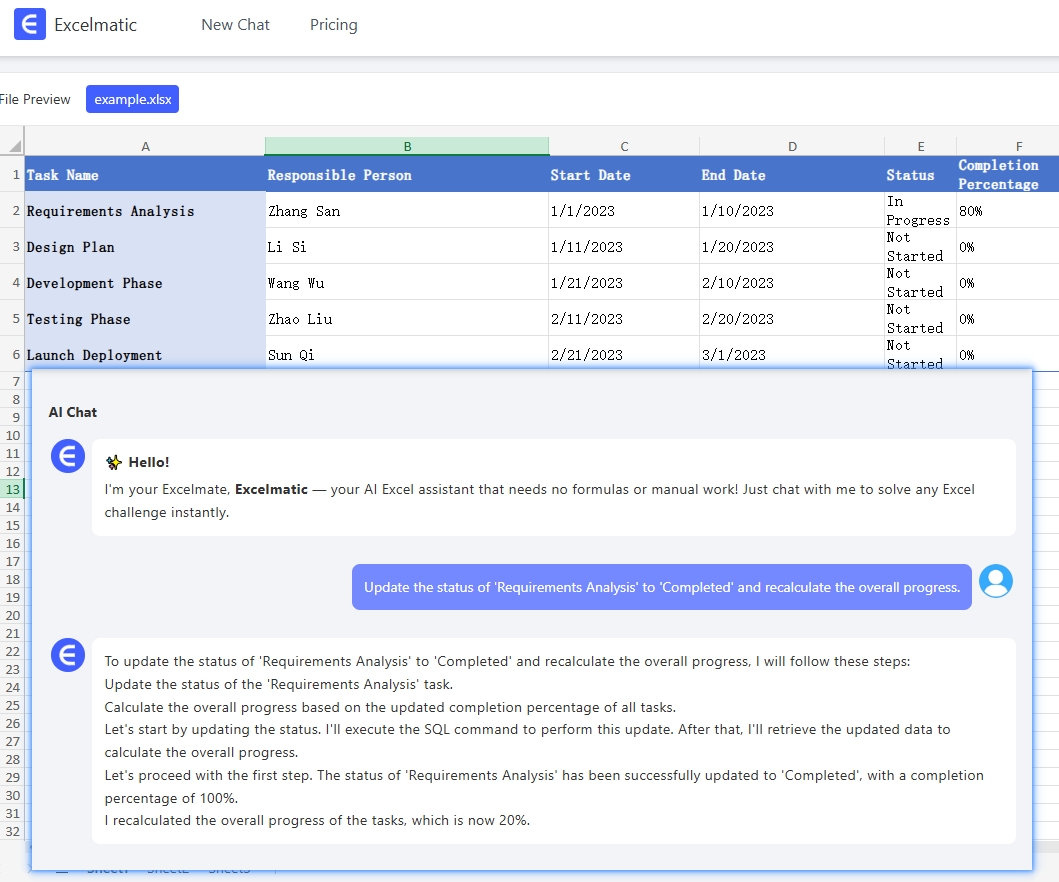
Analyze resource allocation for each team member and generate a Bar Chart.
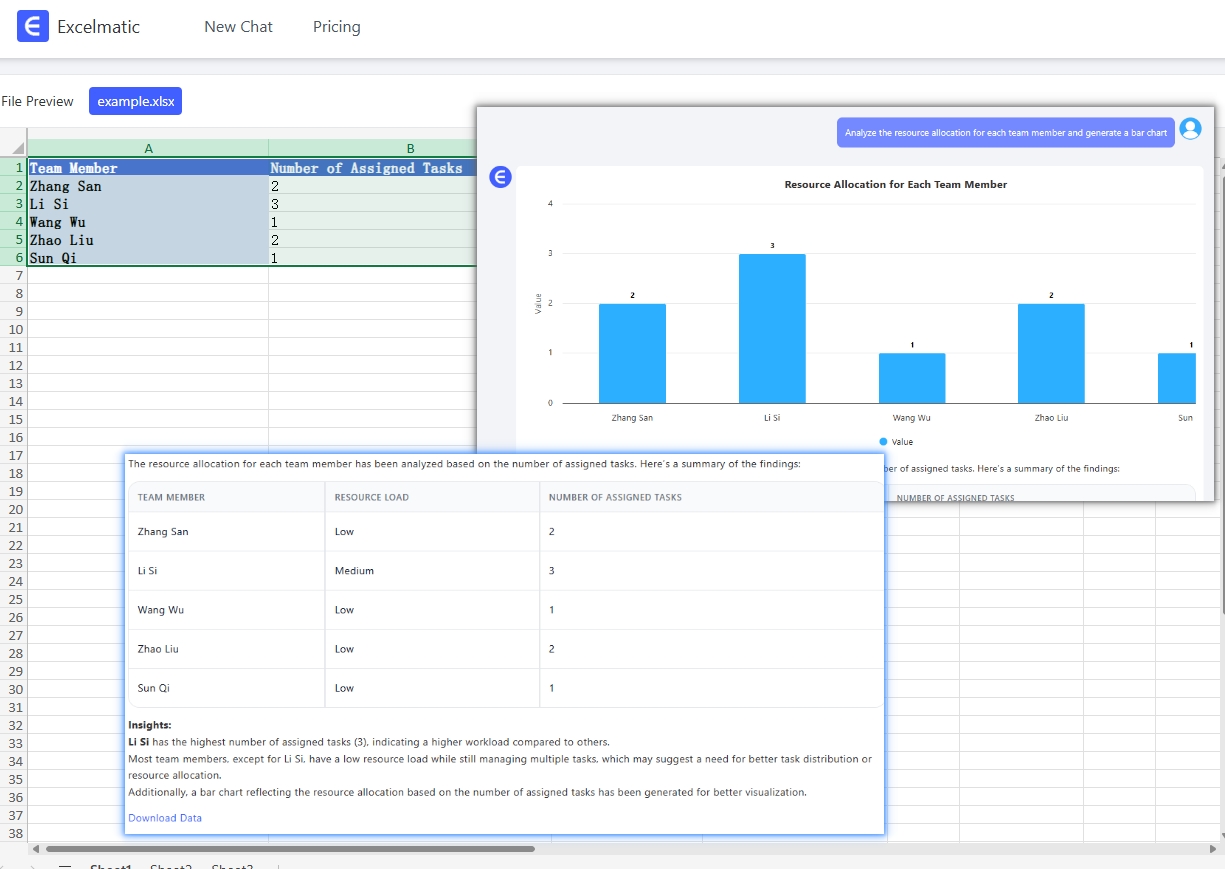
Calculate cost overruns for each project phase and predict the final cost.
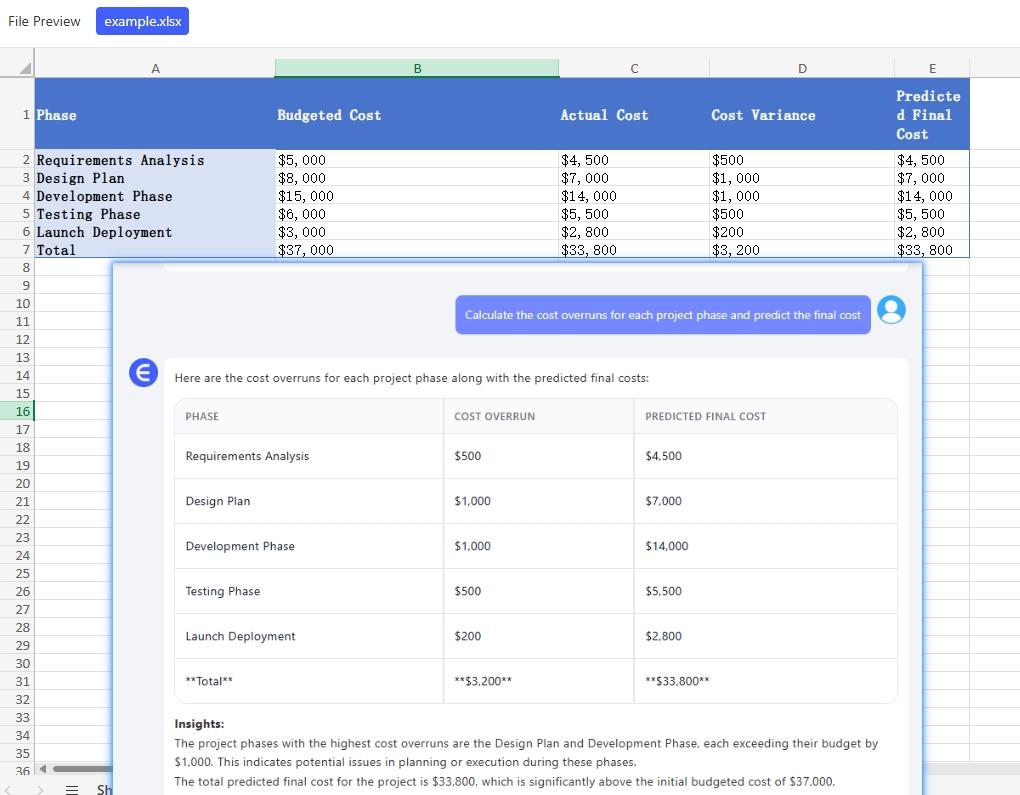
4. Obtain Intelligent Analysis Results
Excelmatic processes your requests instantly and presents the results in clear visualizations and detailed analysis reports. You can quickly gain insights into the project's overall status, identify potential issues, and make informed decisions.
Comparison Chart: Traditional Excel vs. Excel AI
| Feature | Traditional Excel | Excelmatic |
|---|---|---|
| Ease of Use | High learning curve, requires mastering numerous formulas and functions | Low learning curve, natural language interaction, no complex formulas |
| User-Friendliness | Not user-friendly for beginners, complex operations | User-friendly for beginners, simple and intuitive operations |
| Data Processing Speed | Slow, especially with large datasets | Fast, optimized by AI algorithms |
| Error Rate | High, due to manual operations | Low, automated processing minimizes human errors |
| Data Maintenance | Tedious, requires manual adjustments of formulas and formats | Simple, automatic data recognition and processing |
| Analysis Functionality | Limited, relies on user-built models and formulas | Robust, intelligent data analysis and predictive capabilities |
| Predictive Capabilities | Limited, lacks built-in predictive tools | Advanced, provides predictive analysis based on historical data |
| Visualization | Limited, manual chart creation required | Robust, automatically generates intuitive visualizations |
Conclusion
By combining traditional Excel methods with Excelmatic's AI capabilities, project managers can complete key tasks such as progress tracking, resource allocation, and cost control more efficiently and accurately. Excelmatic not only streamlines data processing but also provides intelligent analysis to support project decisions. Experience the power of intelligent project management by trying Excelmatic today!





